Higher for longer rates and the outlook for the Australian equity market
We have shifted our base case expectation for policy easing from late 2024 to first quarter of 2025, albeit we still see some chance of a late 2024 cut if a clearer disinflation trend re-emerges over the next couple of quarters.
Market pricing from too much to too little
The rally in the local equity market over the past 6 months was aided by the prospect of lower interest rates over the coming year. While the market’s shift to price in no easing at all over the next 12 months looks too hawkish in our view, a higher for longer cash rates presents at least a moderate headwind to the local market over the next 6 to 12 months.
Recent speculation in some quarters that the RBA needs to actually hike interest rates again looks wide of the mark to us given the current softness in the economy. It is clear that the RBA policy stance is now acting to slow growth even if inflation is proving sticky in some areas.
Figure 1: Who stole my rate cuts? Market now expects only 1 cut from the RBA late in 2025
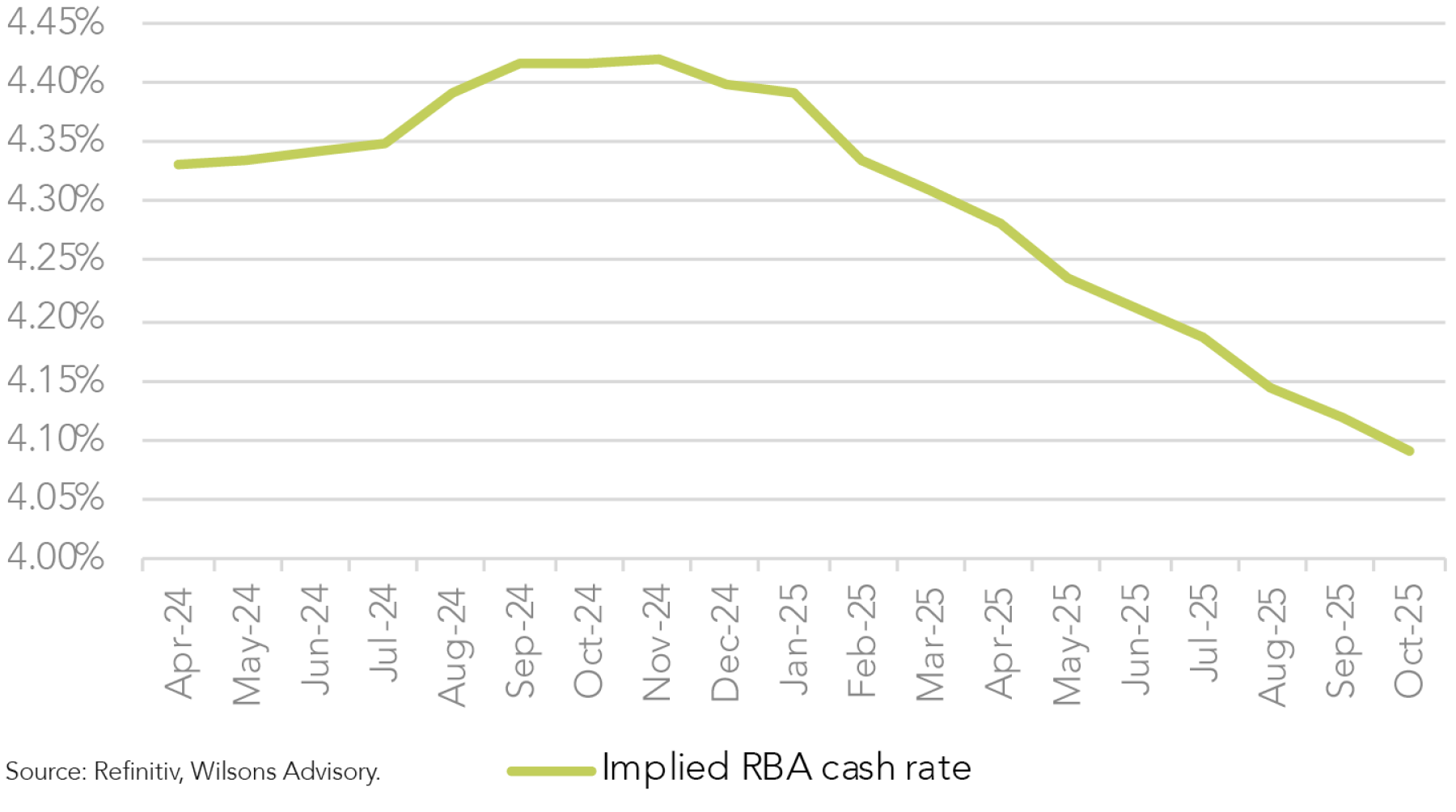
Similarities and differences to the US economic backdrop
This relatively soft domestic growth backdrop contrasts with the economic growth picture in the US where growth still appears very robust. However, even though the US economy remains strong we note that the Federal Reserve (Fed) Chairman Powell has publicly pushed back against the notion that the next move in US rates could be up.
From a domestic perspective, we think the RBA is unlikely to hike rates given the clear loss of economic momentum. However, like the Fed, the RBA will need clear evidence that inflation is heading back toward target levels before it lowers the cash rate.
The market’s unwind of expected central bank rate cuts has been a key recent narrative in both the US and Australia, though there are some notable differences. While expectations for cuts in the US have been wound back significantly, the interest rate markets have retained an expectation for one rate cut from the Fed around November or December, followed by four cuts next year.
Figure 2: Australian growth has slipped below trend while the US continues to grow above trend
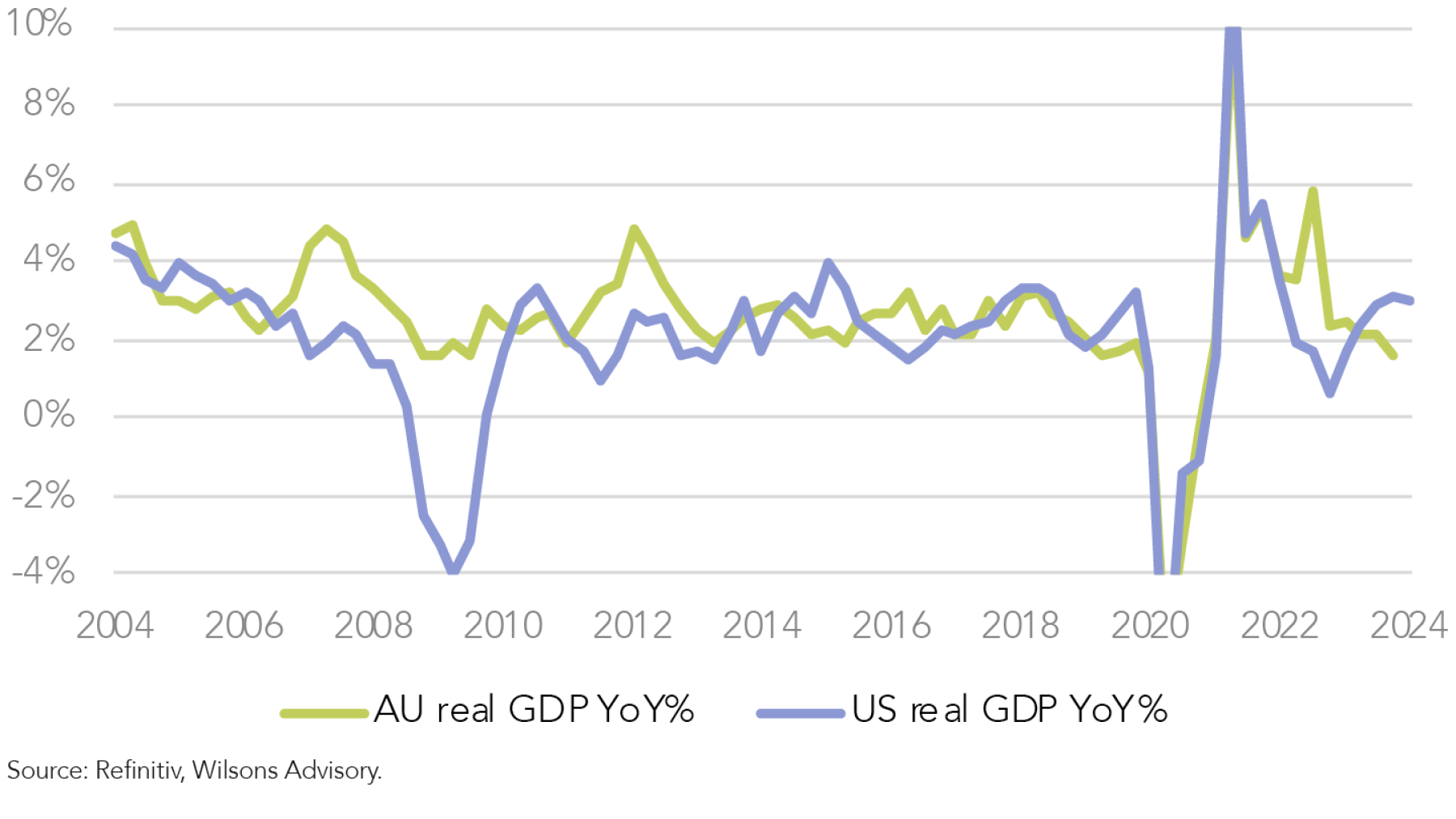
In contrast to expectations for US monetary policy, domestic interest rate markets have almost completely removed the prospect of interest rate cuts until the late 2025. As discussed this appears hawkish given the economy is now barely growing. with significant reliance on now fading immigration flows to keep growth in positive territory.
Balanced against this lacklustre growth backdrop is the dilemma that the local inflation pulse looks somewhat broader than the US situation. The July 1 tax cuts, which represent just over A$20bn of potential spending power over the coming year, also create a potential complication for the RBA if the tax cuts were to stoke a significant lift in consumer demand.
On balance, we see the now significant weakness in the domestic consumer as suggesting the upcoming tax cuts, while supportive for consumption, won’t add materially to the inflation backdrop. Domestic inflation, while homegrown from the perspective of being concentrated in the “non-tradeables” sector no longer appears to be driven by excess consumer demand, with goods price disinflation seemingly well entrenched.
Figure 3: Real consumption is no longer growing
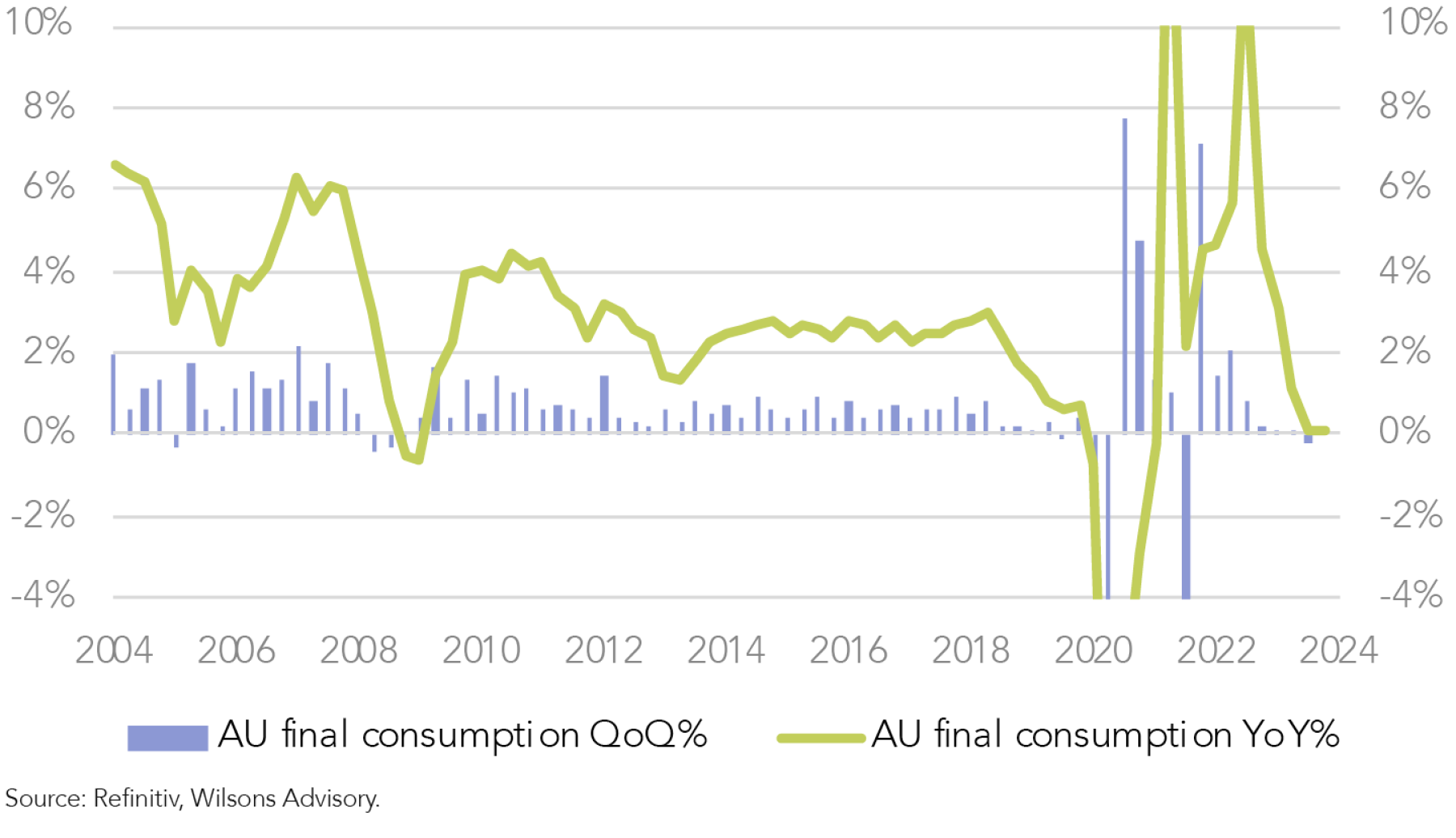
Domestic inflation is now mostly services centric and is being driven by some unique factors. These include an undersupplied rental market, which has been aggravated by excessively strong immigration flows. Surging insurance costs have some unique factors, although this area of acute price pressure is likely to moderate. Rising education and healthcare costs likely have a wage cost element which has its origins in the post pandemic surge in the cost of living. However, the risk of significant additional wage prices appear to be easing, rather than rising, as the economy loses steam.
Figure 4: The post pandemic migration boom has kept the economy growing but contributed to inflation pressures
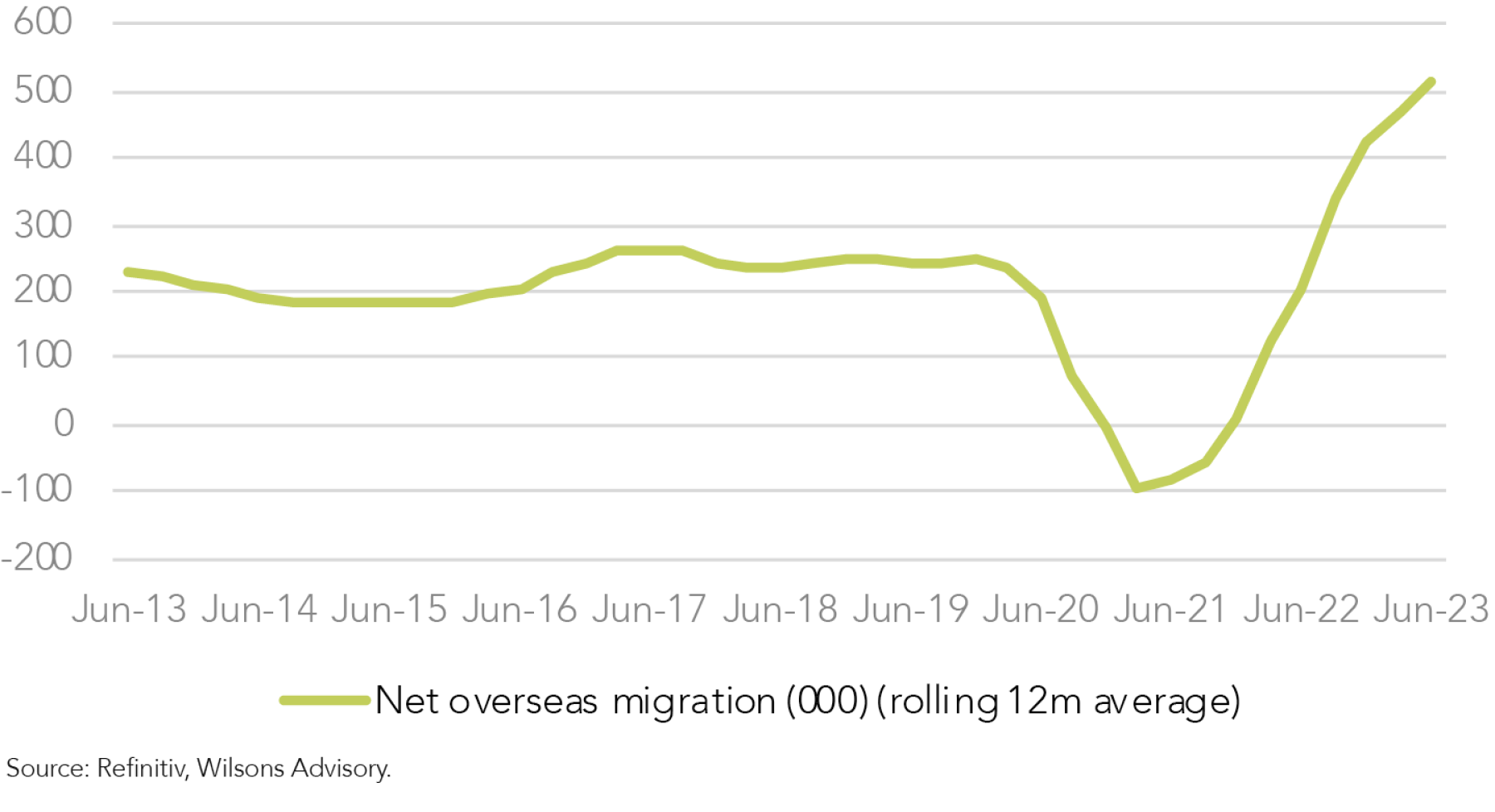
Overall, we expect a further period of sub trend growth will allow inflation to ease with additional goods price disinflation likely as consumer demand stays subdued, while at least some of the services sector inflation currently evident should dissipate helped by cooling labour market conditions.
Higher rates cap the cyclical upside risk for local equities
From the perspective of the equity market aggregate subdued earnings prospects are as much by the market’s sector mix as the prospect of a sluggish near-term outlook for the economy.
The consensus expectation of moderately positive earnings FY25 (+5%) appears reasonable, however, a strong earnings rebound is hard to envisage with banks and the large caps miners continuing to drag on market earnings growth.
Figure 5: Australian market EPS growth by financial year. Only a moderate rebound in FY25
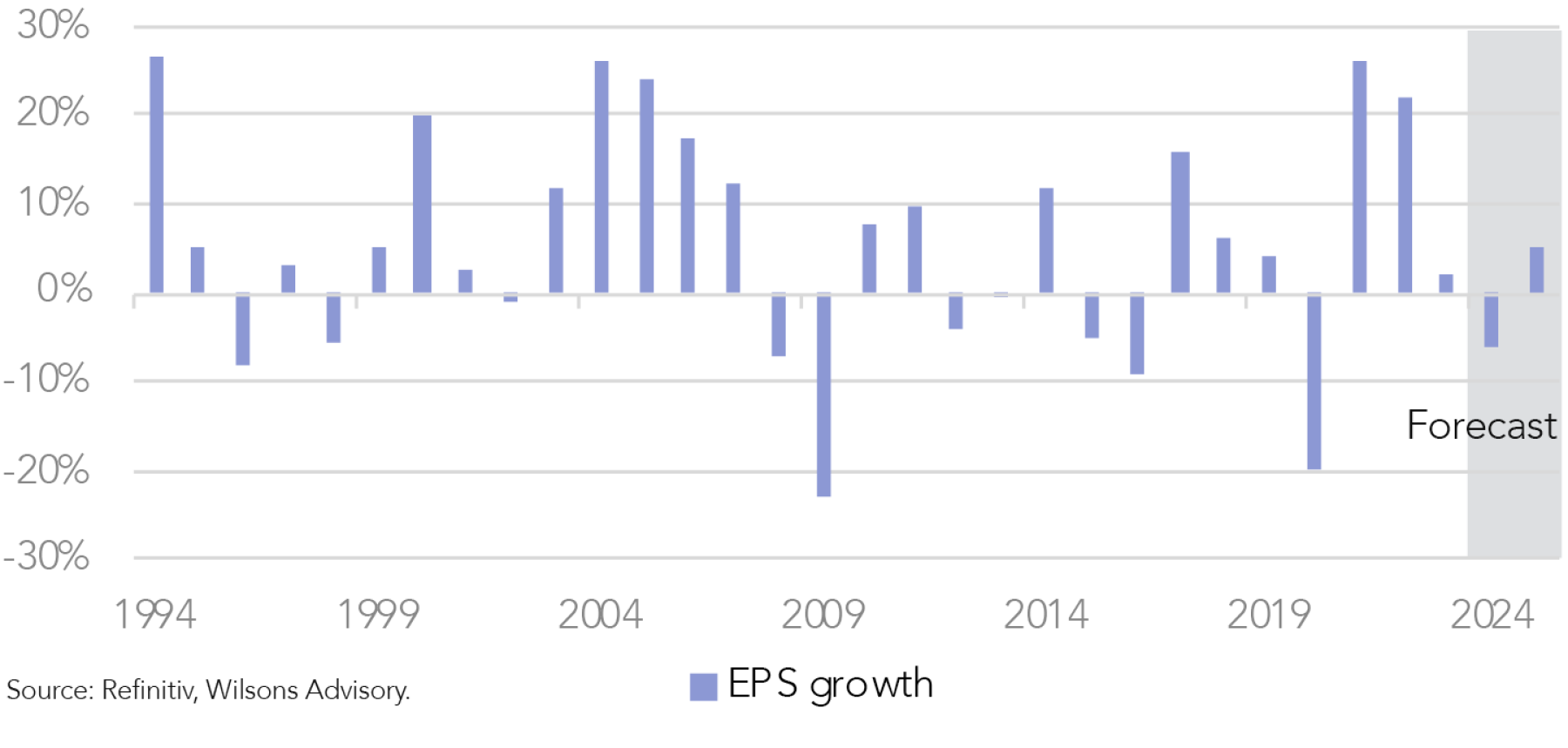
When combined with a relatively full domestic market valuation we see fairly constrained but still positive total return potential in the local index over the coming year ~8%.
While Banks (even more so with higher for longer rates) and the large cap iron ore focussed miners appear growth constrained, there are promising growth prospects elsewhere in some significant areas of the market. This includes healthcare and IT, as well as a number of other large cap globally oriented franchises. Mid and small caps offer numerous attractive price-for-growth opportunities even if higher for longer rates present some headwinds at the margin for the small cap end of the market.
Figure 6: Australian valuations look relatively full
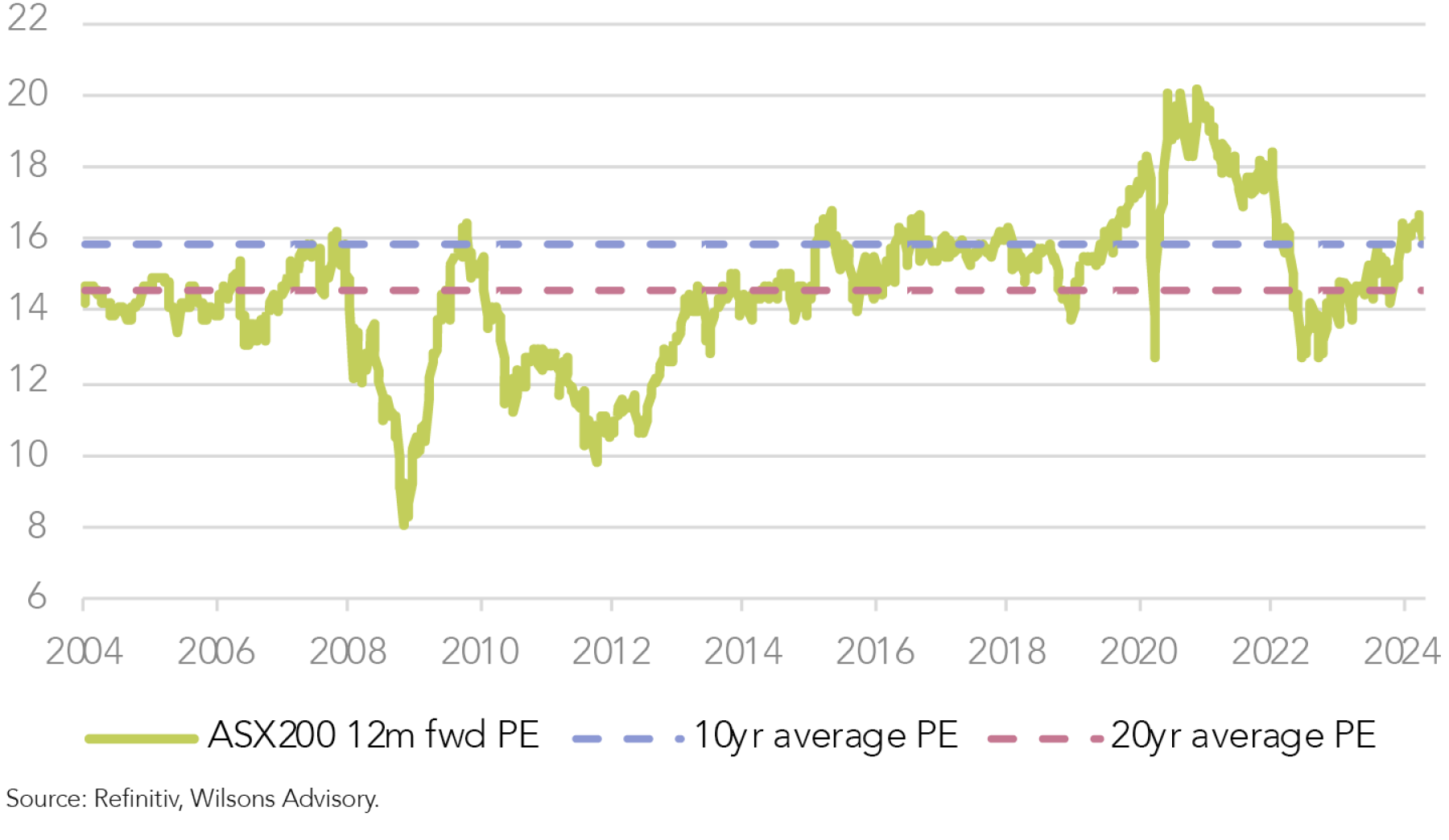
Overall, we still see prospects for the local market to push ahead over the coming 6 to 12 months. Interest rate tailwinds have been pushed out, though the global growth outlook appears marginally brighter than a couple of months ago. The local market should still eke out some modest gains, though stock and sector selection will be important to maximising returns.
The domestic market earnings growth outlook appears relatively lacklustre in a global context. However, the prospect of some moderate strength in the Australian dollar as the RBA lags the global easing cycle should even up common currency return potential over the next 12 months at least.
Learn more
Wilsons Advisory think differently and delves deeper to uncover a broad range of interesting investment opportunities for their clients. To read more of our latest research, visit our Research and Insights.

